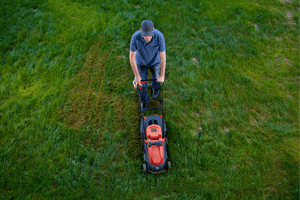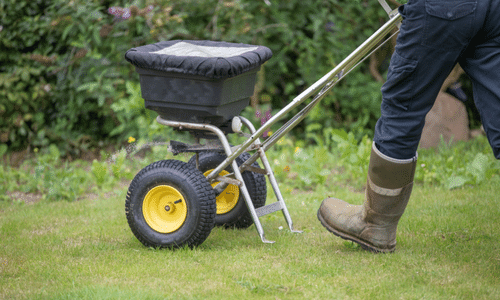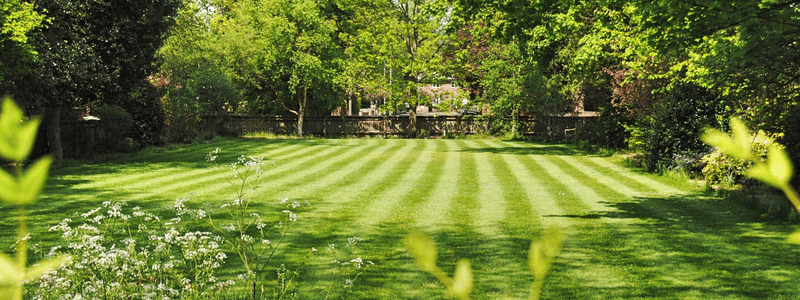Timing is important. Although it would seem beneficial to begin working outside as soon as the weather heats up, waiting will allow you to get the most out of your efforts. The best time to start spring cleaning your lawn is when it has primarily turned green. Excessive foot movement on the lawn can compact the soil and increase the chance of killing off young grass shoots before the grass is green and actively growing.
The best approach to ensure that your lawn will be lush and green throughout the summer is to give it extra care and attention each spring. You may make the most of your time and enjoyment by acting appropriately at the appropriate moment with the assistance of RDK LANDSCAPING.
Cool-Season Grasses

The two main growing seasons for cool-season grasses are spring and fall. Spring maintenance should concentrate on fortifying the grass to withstand the summer heat better because it can struggle and fall dormant in the summer.
Warm-Season Grasses
Following the last spring frost, warm-season turf grasses start to develop and reach their peak growth as the summertime heat builds.
Spring Lawn Care Checklist

Here are some Spring lawn care maintenance tasks you can carry out to make your lawn more attractive and weed-free this season, with comments on when to do them for warm- and cool-season grasses.
Start Off Slow
Despite your enthusiasm, wait until the soil has had time to dry up and your lawn has had time to reawaken before engaging in any strenuous yard maintenance. Spending too much time on your lawn in the early stages can harm new shoots or compact the soil; instead, put your time to better use by cleaning garden tools, maintaining your mower, or spreading out snow mounds to speed up the drying process.
Cleaning up the yard
Early in the spring, most lawns require some debris cleanup. Making sure your lawn receives the necessary amount of sunlight for it to swiftly turn green by raking up leaves and other organic matter. Use a leaf rake rather than a stiff garden rake when taking it to ensure that you are gentle and don’t damage the lawn.

Fertilize
If you neglected to fertilize your lawn last fall or it is in poor condition, add a tiny amount of slow-release fertilizer to give it a boost. Cool-season grasses should be fed in the fall during their peak growing season. Apply fertilizer to warm-season grasses after active growth starts in mid to late spring.

Seeding
When the soil is not too wet and the earth is not frozen, cool-season grasses can be planted. The seed will then start to germinate as soon as the temperature of the ground reaches 50 degrees. The idea is to plant as soon as the weather permits so that the grass has as much opportunity to establish itself before the stress of the summer heat pounds down on it. Your goal for spring planting should ideally be to fill in bare places since fall is a better time to sow cool-season grasses. Warm-season grasses should be planted once all danger of frost has gone and soil temperatures are typically in the 60s.
Control Weeds
Early spring is a perfect time to control weeds, but you will need to decide between over seeding and weed control because the latter will stop the growth of new grass. To inhibit the growth of weeds and crabgrass, lightly spray the area with a pre-emergent weed killer.
Set up the garden beds
Start preparing your garden beds after the soil is workable after the last frost. During the winter, the soil becomes more compact, making it more challenging for water and nutrients to reach the roots of your plants. Use a tiller or a sharp spade to loosen the soil; now is an excellent opportunity to add compost or other nutrients. Plant annuals and add new mulch to your yard for a splash of spring colour.
Additional Tips

– Mowing – Once the grass has grown sufficiently, start cutting it, keeping the height of the blade at no more than one-third.
– Watering – Per week, aim for around one inch of water.
– Pruning – Trim trees and bushes before the buds start to form if you didn’t do it throughout the winter.
– Pest control – Grubs may appear in the late spring and start to eat your lawn. For a thorough evaluation and treatment if you see pest-related damage, get in touch with The RDK LANDSCAPING.
– Aeration – Aeration should be done for the best outcomes during the height of the growing season; for cool-season grasses, this is in the fall, while for warm-season grasses, this is in the early summer…
Our Services
Latest Posts
- Transform Your Outdoor Space: Top Landscape Design Trends for 2024
- How to Choose the Perfect Plants for Your Garden: Expert Tips
- Snow Relocation and Hauling: Strategies for Managing Excess Snow in Your Property
- DIY Snow Relocation and Hauling: Tips for Handling Excess Snow Efficiently
- Snow Salting and Sanding: Essential Techniques for Safe Winter Surfaces

A time of renewal, spring is also a fantastic time to get your house and yard ready for the coming summer. Allow your neighborhood services to assist with inside spring cleaning while you take care of your spring lawn. Contact the experts at RDK LANDSCAPING for all your year-round landscaping needs.






